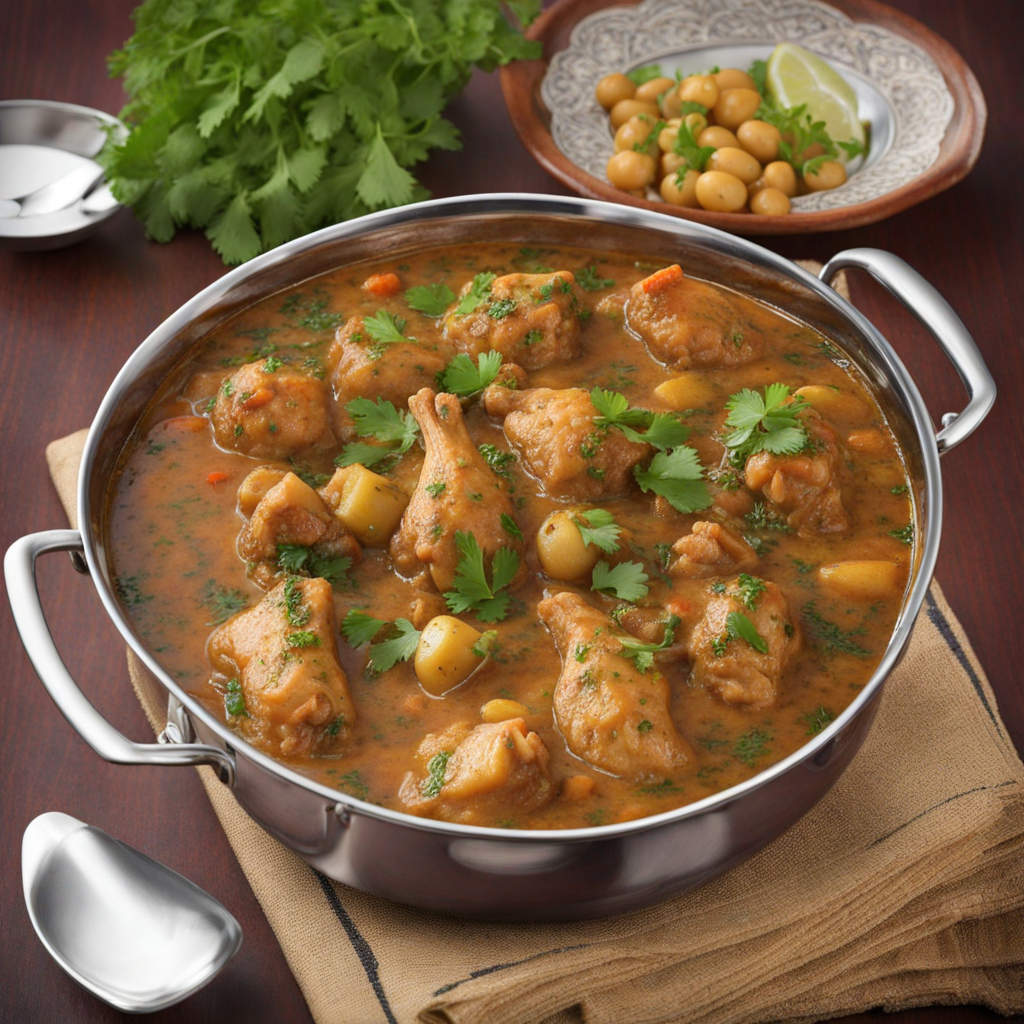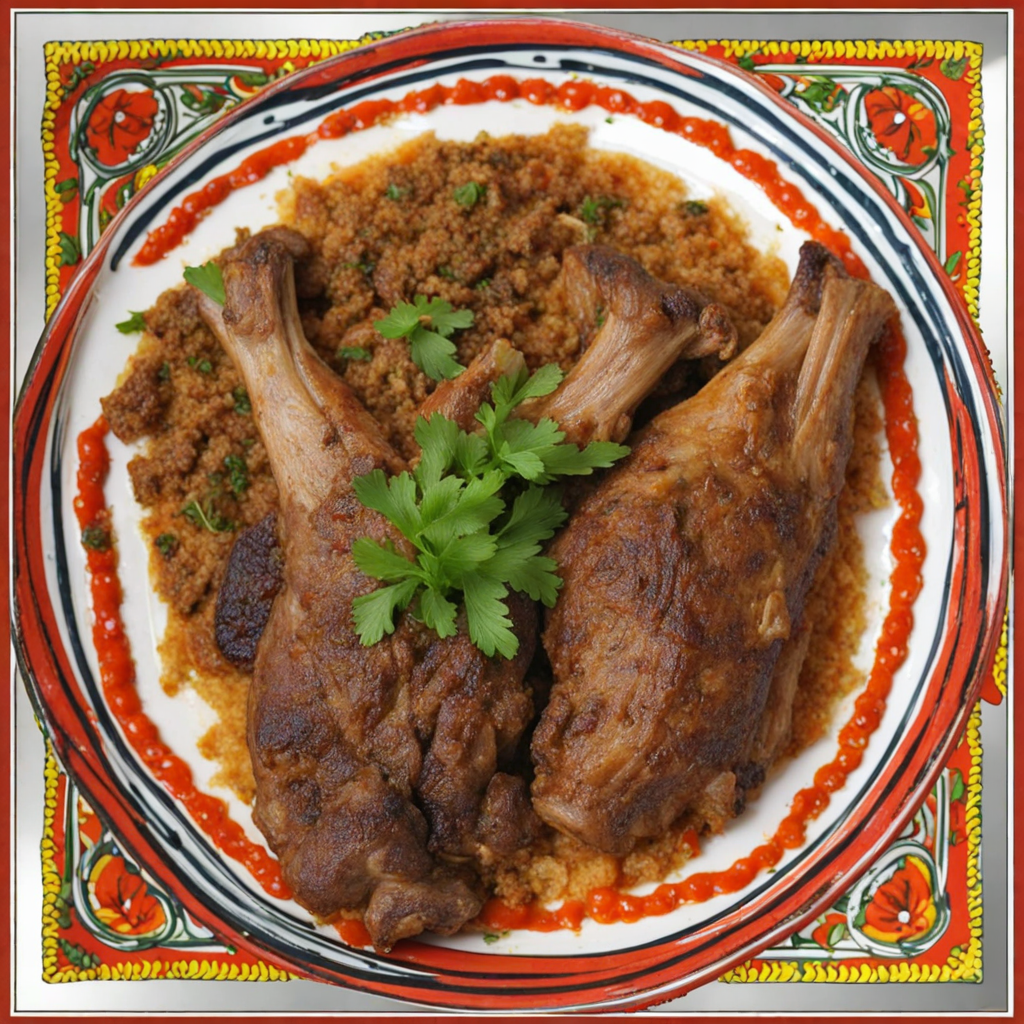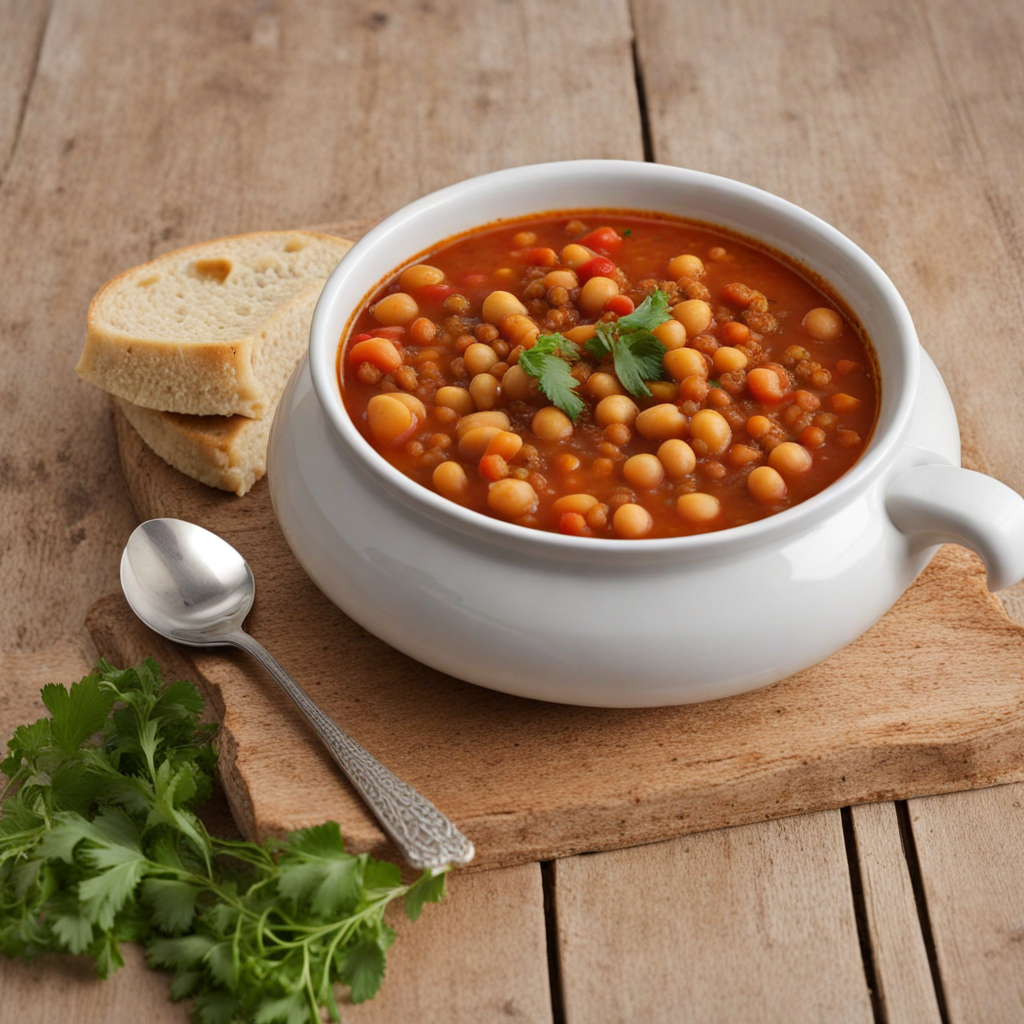Djedj b’l-qasbour
Djedj b’l-qasbour is a traditional Algerian dish that showcases the rich flavors and culinary heritage of the region. At its core, this dish features tender chicken, marinated with a blend of spices that typically includes cumin, coriander, and a hint of cinnamon, creating a fragrant and aromatic profile. The chicken is often slow-cooked to ensure it absorbs all the spices, resulting in meat that is succulent and bursting with flavor. The dish is usually accompanied by a medley of vegetables, such as bell peppers, onions, and tomatoes, which add freshness and a slight sweetness, balancing the spices beautifully. What truly sets Djedj b’l-qasbour apart is the distinctive sauce, often made with a base of crushed tomatoes and flavored with additional spices, providing a rich, tangy complement to the chicken. The sauce can be adjusted to preference, sometimes featuring a touch of harissa for those who enjoy a bit of heat. When served, the dish is typically garnished with fresh herbs like parsley or cilantro, which not only enhance the visual appeal but also add a burst of freshness that lifts the dish. Djedj b’l-qasbour is often served with a side of fluffy couscous or crusty bread, perfect for soaking up the delicious sauce. Its comforting and hearty nature makes it a favorite for family gatherings and special occasions. This dish encapsulates the essence of Algerian cuisine, where bold flavors and communal dining come together, inviting those who try it to savor a unique taste of Algeria's rich culinary landscape.
How It Became This Dish
The History of جاج بالقصبور (Jaj bil Qasbour) from Algeria #### Origins جاج بالقصبور, transliterated as Jaj bil Qasbour, is a traditional Algerian dish that embodies the rich culinary heritage and cultural diversity of Algeria. The name translates to "Chicken with Coriander," which highlights its primary ingredient and a defining flavor profile. The dish is a testament to the intricate tapestry of Algeria's history, interweaving Berber, Arab, French, and Mediterranean influences into a singular culinary experience. Algeria's geography, which stretches from the Mediterranean coastline to the Sahara Desert, has greatly influenced its local cuisine. The nation has been inhabited by various groups for thousands of years, including the indigenous Berbers, who contributed to the country’s agricultural practices, and the Arab conquerors who introduced new spices, cooking techniques, and flavors during the 7th century. Jaj bil Qasbour likely emerged during this period or shortly thereafter, as chicken became a staple protein across the region, complemented by various herbs and spices available in local markets. #### Cultural Significance Jaj bil Qasbour is much more than just a meal; it is a dish steeped in cultural significance. In Algeria, food is an integral part of social life, often associated with family gatherings, celebrations, and rituals. Jaj bil Qasbour is commonly prepared during special occasions, such as weddings, religious feasts, and family reunions, where it serves as a symbol of hospitality and abundance. Coriander, or "qasbour" as it is called in Arabic, is a key ingredient in this dish and holds its own cultural significance. This herb is emblematic of North African cooking, where fresh herbs play a vital role in flavoring dishes. Coriander is revered not only for its culinary qualities but also for its medicinal properties, believed to aid digestion and enhance overall well-being. The dish, therefore, is a celebration of both nourishment and health, reinforcing the communal values of sharing and caring for one another. #### Ingredients and Preparation The preparation of Jaj bil Qasbour is a reflection of Algeria’s agricultural bounty. The primary ingredient, chicken, is often sourced from local farms, emphasizing the importance of fresh, quality produce in Algerian cuisine. Alongside chicken, the dish typically includes a variety of vegetables such as potatoes, carrots, and peas, which not only add flavor but also introduce a range of textures. The cooking method is equally important; the chicken is usually marinated in a mixture of spices, including cumin, paprika, and, of course, coriander, before being slow-cooked. This method allows the flavors to meld together, resulting in a rich, aromatic dish that tantalizes the senses. Once the chicken is tender, it is usually served with a side of rice or couscous, which helps to absorb the flavorful sauce and rounds out the meal. #### Development Over Time Over the years, Jaj bil Qasbour has evolved while retaining its traditional roots. The dish reflects the changing tastes and lifestyles of Algerians, especially in urban centers where influences from global cuisines have begun to emerge. The modernization of cooking techniques and the availability of various ingredients have led to new interpretations of the classic recipe. In recent years, there has been a revival of interest in traditional Algerian cuisine, often driven by younger generations seeking to reconnect with their cultural heritage. Chefs and home cooks alike are experimenting with Jaj bil Qasbour, incorporating contemporary cooking methods such as sous-vide or pressure cooking. Additionally, there is a growing focus on organic and locally-sourced ingredients, further enriching the dish's flavor profile while ensuring sustainability. Social media platforms have also played a crucial role in the reimagining of Jaj bil Qasbour. Recipes are shared and adapted, with food bloggers and influencers showcasing their unique takes on this classic dish. This accessibility has introduced a broader audience to Algerian cuisine, encouraging intercultural exchange and appreciation for its depth and diversity. Moreover, as Algerians living abroad seek to maintain their culinary traditions, Jaj bil Qasbour has found its way into homes around the world. It represents not only a taste of home but also a connection to their cultural identity. In diaspora communities, preparing and sharing this beloved dish brings people together, fostering a sense of belonging and continuity. #### Conclusion Jaj bil Qasbour is more than just a dish; it is a narrative of Algeria’s resilience and adaptability. It embodies the history of a nation marked by diverse cultural influences, evolving agricultural practices, and changing social dynamics. As it continues to adapt to modern tastes while honoring its traditional roots, Jaj bil Qasbour stands as a testament to the enduring nature of culinary heritage. Through each bite, one can taste the legacy of the past, the vibrancy of the present, and the promise of the future. It is a dish that not only nourishes the body but also feeds the soul, reminding us of the power of food to connect individuals and communities across time and space. As Algeria continues to navigate the complexities of modern life, Jaj bil Qasbour will undoubtedly remain a cherished symbol of its cultural identity, a dish that brings people together at the table, celebrating both history and the promise of tomorrow.
You may like
Discover local flavors from Algeria







